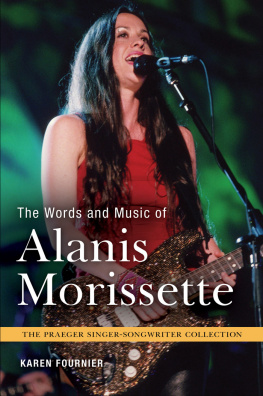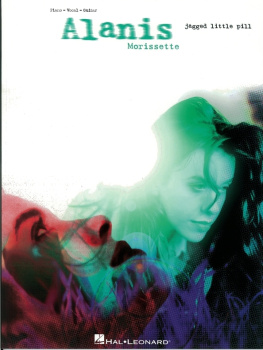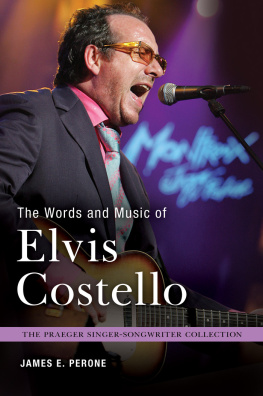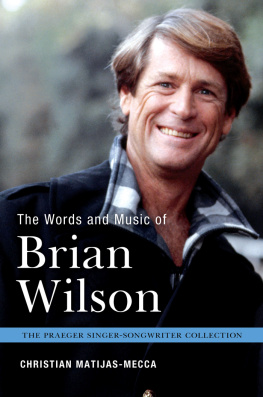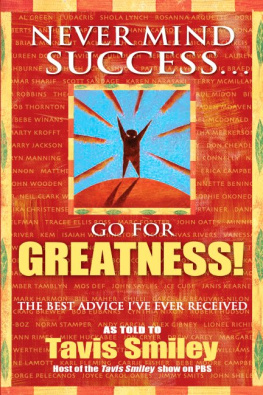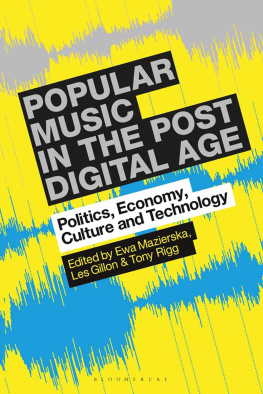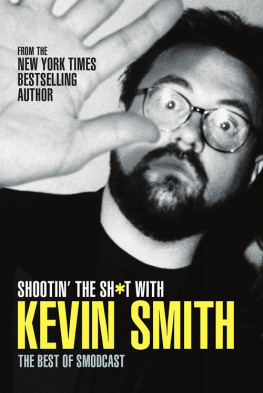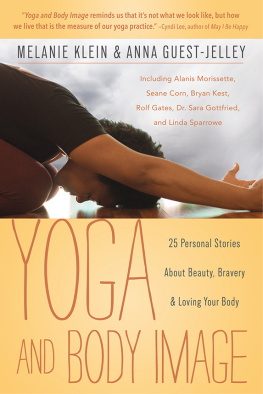Recent Titles in
The Praeger Singer-Songwriter Collection
The Words and Music of Ice Cube
Gail Hilson Woldu
The Words and Music of Tom Waits
Corinne Kessel
The Words and Music of Sting
Christopher Gable
The Words and Music of Van Morrison
Erik Hage
The Words and Music of Joni Mitchell
James Bennighof
The Words and Music of George Harrison
Ian Inglis
The Words and Music of Paul McCartney: The Solo Years
Vincent P. Benitez
The Words and Music of Jimi Hendrix
David Moskowitz
The Words and Music of Billy Joel
Ken Bielen
The Words and Music of Dolly Parton: Getting to Know Countrys Iron Butterfly
Nancy Cardwell
The Album: A Guide to Pop Musics Most Provocative, Influential, and Important Creations, 4 volumes
James E. Perone, Editor
The Words and Music of Melissa Etheridge
James E. Perone
THE PRAEGER SINGER-SONGWRITER COLLECTION
The Words and Music
of Alanis Morissette
Karen Fournier
James E. Perone, Series Editor

Copyright 2015 by Karen Fournier
All rights reserved. No part of this publication may be reproduced, stored in a retrieval system, or transmitted, in any form or by any means, electronic, mechanical, photocopying, recording, or otherwise, except for the inclusion of brief quotations in a review, without prior permission in writing from the publisher.
Library of Congress Cataloging-in-Publication Data
Fournier, Karen, author.
The words and music of Alanis Morissette / Karen Fournier.
pages ; cm. (The Praeger singer-songwriter collection)
Includes bibliographical references, discography, and index.
ISBN 9781440830686 (hardcopy : alk. paper) ISBN 9781440830693 (ebook) 1. Morissette, AlanisCriticism and interpretation. 2. Popular musicHistory and criticism. I. Title.
ML420.M6185F682015
782.42166092dc23 2014036014
ISBN: 9781440830686
EISBN: 9781440830693
19 18 17 16 15 1 2 3 4 5
This book is also available on the World Wide Web as an eBook.
Visit www.abc-clio.com for details.
Praeger
An Imprint of ABC-CLIO, LLC
ABC-CLIO, LLC
130 Cremona Drive, P.O. Box 1911
Santa Barbara, California 93116-1911
This book is printed on acid-free paper 
Manufactured in the United States of America
Contents
Series Foreword
Although the term singer-songwriter might most frequently be associated with a cadre of musicians of the early 1970s such as Paul Simon, James Taylor, Carly Simon, Joni Mitchell, Cat Stevens, and Carole King, the Praeger Singer-Songwriter Collection defines singer-songwriters more broadly, both in terms of style and time period. The series includes volumes on musicians who have been active from approximately the early 1960s through the present. Musicians who write and record in folk, rock, soul, hip-hop, country, and various hybrids of these styles are represented. Therefore, some of the early 1970s introspective singer-songwriters named here will be included, but not exclusively.
What do the individuals included in this series have in common? Some have never collaborated as writers, whereas others have, but all have written and recorded commercially successful and/or historically important music and lyrics at some point in their careers.
The authors who contribute to the series also exhibit diversity. Some are scholars who are trained primarily as musicians, whereas others have such areas of specializations as American studies, history, sociology, popular culture studies, literature, and rhetoric. The authors share a high level of scholarship, accessibility in their writing, and a true insight into the work of the artists they study. The authors are also focused on the output of their subjects and how it relates to their subjects biographies and the society around them; however, biography in and of itself is not a major focus of the books in this series.
Given the diversity of the musicians who are the subject of the books in this series, and given the diversity of viewpoint of the authors, volumes in the series differ from book to book. All, however, are organized chronologically around the compositions and recordings of their subjects. All of the books in the series also serve as listeners guides to the music of their subjects, making them companions to the artists recorded output.
James E. Perone
Series Editor
Acknowledgments
This project would not have come to fruition without James Perone, and I would like to thank him for making this unique project available to me. I have thoroughly enjoyed every minute of this study, which has sent me back in time to the place where I first encountered Alanis Morissettes music in Canada when she was a budding teenage star and I was a (slightly older) university music student at the University of Ottawa. It has been an interesting journey through her music and career that I might not have taken if James had not encouraged me to write this volume for the series.
I would like to thank the many friends who patiently waited for me to resurface after many months of seclusion as I worked on this book. From the University of Michigan, Dr. Abigail Stewart deserves special mention as one of my strongest advocates at the university, and her expertise on gender and identity has been extremely important in shaping the direction of my research both in this project and in my work on British punk. She is a treasured colleague and a dear friend. From within my home unit (the Department of Music Theory at Michigan), I would like to thank Dr. Marion Guck for her mentorship and unwavering support since I arrived as a junior faculty member in 2005, Dr. Patricia Hall for her guidance and unflagging interest in my work since she joined our faculty as our department chair a few years ago, and Professor Emeritus Dr. Andrew Mead, who is now on the faculty at Indiana University in Bloomington and whose presence at the University of Michigan I miss more than I can say. Professors James Borders, Jane Fulcher, Michael Haithcock, Jeffrey Lyman, Carmen Pelton, Martha Sheil and her partner Marsha, and David Winter deserve special thanks for their friendship and interest in the progress of this project, and of my work in general. Finally, I would also like to thank all the members of my weekly film club for keeping me sane during periods of intense writing.
On a personal note, I would like to acknowledge the critical role played by my parents, Robert and Denyse; my sister and brother-in-law, Leslie and Rob; and my flat mate, Eliot, in providing moral support through this (and every) writing project. Last, but by no means least, I owe an immeasurable debt of gratitude to my partner Christian Matijas-Mecca for dealing with me on a day-to-day basis with peace, love, and understanding (not to mention a great deal of patience and humor). I am so lucky to have a partner like you.
Finally, a debt of gratitude must be paid to Morissette, herself, for her extraordinary creative output over the span of the last 25 years and for her dedication to various social and environmental causes. It seems only appropriate to say, Thank U, Alanis.
Theorizing Morissette
THE LIMITATIONS OF ANGER AS AN INTERPRETIVE TOOL
Anger has always been an emotional response denied to women. It contorts the female face and thereby masks the beauty that supposedly lies in female complacency. It raises the volume of the female voice in a way that challenges the self-restraint conventionally imposed upon, and expected from, women, and exposes her to the charge of hysteria. It forces the body to react forcefully and aggressively in a way that is inconsistent with female physical passivity. Female anger represents an incursion into male space through its appropriation of an emotion, and concomitant modes of conduct, typically coded as male. By contrast, anger is traditionally viewed as male-normative and understood as a vehicle through which a man asserts, or reasserts, the control that he is due in a patriarchal system. The male resides on top of that system, and even in situations where an individual male finds himself subordinate to other males within the system, he is nonetheless permitted access to anger as a way to challenge any situation that challenges his virility and, to quote from to Reynolds and Press, forces him to [languish] as a cog in the machine, while dreaming of a life fit for heroes. When a man is angry, we can read his rage as an understandable response to the unfulfilled dreams of an aspiring hero, but for a woman, there is no parallel myth of the frustrated heroine to explain this emotional response. Rather, the angry woman is pathologized, sanctioned, isolated, and silenced.
Next page
